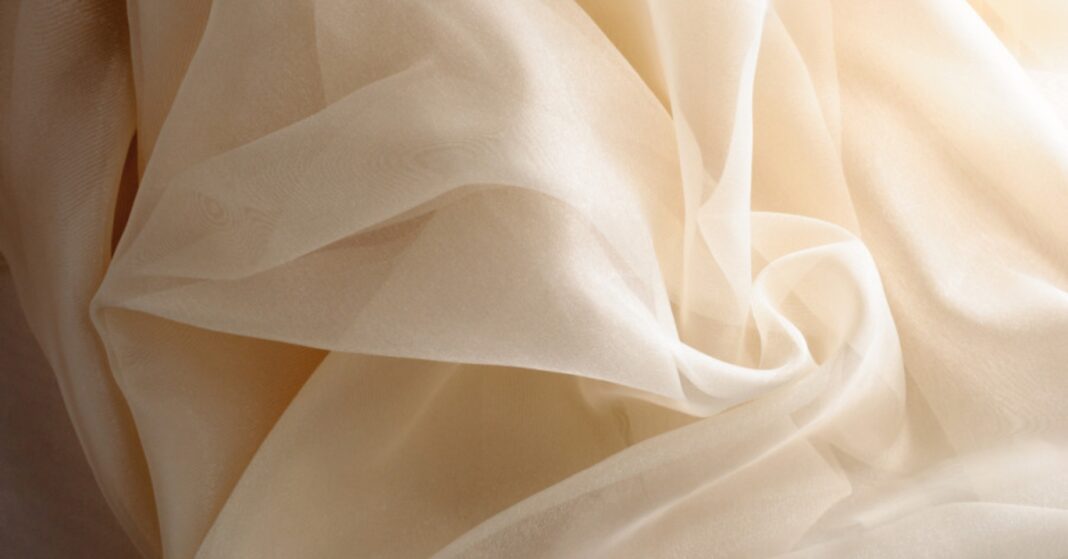Introduction to Organdy Fabric
What is an organdy fabric? A detailed discussion about this fabric starts with the appeal and its uses. Organdy fabric is simply described as lightweight, sheer textile with a unique, crisp structure and delicate appearance. Many people adore to use organdy fabric, especially for DIY projects, because of its ability to retain its shape while being soft and breathable. It is widely used in the contemporary fashion industry and interior design because of how luxurious and beautiful and appealing it is. A lot of experts and fabric designers value the charm of this amazing material since it offers superb elegance and novelty. The ethereal charm of the fabric makes it a timeless add on pieces to all garments and interiors luxe sophistication.
Table of contents
- Introduction to Organdy Fabric
- Where Organdy Fabric Comes From
- The Properties That Make Organdy Fabric Exceptional
- How Organdy Fabric Is Made
- General Functions of Organdy Fabric in Fashion
- Organdy Fabric and Home Decor
- Comparing Organdy with other sheer fabrics
- Looking After Organdy Fabrics
- Why Organdy Fabrics Remains Popular
- FAQs
Where Organdy Fabric Comes From
The charm and uses of organdy fabric are so extreme that we should first talk about what it is and its origins. Organdy fabric is from Europe, and it became popular for fine clothes and accessories. Originally made out of cotton, it is stiffened using a particular finishing method. Today, many designers have updated its modern form but still retain its historical beauty. The fabric of organdy was largely softened and used to be associated with royalty and aristocracy. It was used widely during the 18th and 19th centuries for petticoats, bonnets, as well as for a number of elaborate dresses. The beautiful weaving of fabrics like organdy is an art that has been passed down through many generations, ensuring that this type of fabric perpetually remains in demand.
The Properties That Make Organdy Fabric Exceptional
Organdy fabric is a type of fabric which has very distinct features as described in ‘What is organdy fabric? A Guide to its Airy Charm & Uses.’ Organdy fabric is crisp in texture but lightweight, which means that it can hold some volume without feeling very heavy. Its sheer quality makes it ideal for layering in dresses and other ornamental accessories. Also, organdy fabric is breathable which makes it very comfortable for warm weather clothing. To some extent, this fabric is also wrinkle resistant, which means that the fabric will have a fresh look throughout the day. Unlike other sheer fabrics which may lose their tautness, shape, and volume over time, organdy does not, which makes it ideal for intricate designs that need stiffness and volume.
Different Types of Organdy Fabric
What is organdy fabric? A guide to its airy charm & uses is incomplete without discussing its variations. There are three main types: stiff, semi-stiff, and soft.
- Stiff Organdy: This variation holds its shape firmly, making it ideal for structured garments, bridal gowns, and decorative trims. It is commonly used in formalwear where volume and form are required.
- Semi-Stiff Organdy: This version offers a balance between structure and flexibility. It provides a crisp look while allowing a little drape, making it suitable for lightweight dresses and elegant table settings.
- Soft Organdy: This type drapes beautifully, making it perfect for flowing designs like ruffles, shawls, and delicate overlays. It is often used in eveningwear and high-fashion collections where subtle elegance is key.
How Organdy Fabric Is Made
What is organdy fabric? As the guide describes, manufacturers weave cotton threads tightly together into a smooth, sheer fabric. This fabric is then chemically treated to make it stiffer. Because of this process, organdy fabrics are crisp and maintain an elegant finish. While other synthetic sheer fabrics, such as those made from polyester, require the use of artificial stiffeners, organdy fabric is able to use natural cotton fibers to provide its structure. The fabric underwent a unique weaving process achieving an equal balance of transparency and strength preventing the fabric from being overly delicate.
General Functions of Organdy Fabric in Fashion
What is organdy fabric? Learn the steps to examine its status in fashion, as well as its effervescent appeal and other uses. Designers utilize it in creating stunning dresses, blouses, skirt suits, and even evening gowns. The airy characteristic of the fabric allows it to be used in layering, producing volume within skirts and bridal veils. Many haute couture collections use organdy because of its elegant and ethereal quality. This fabric is also common in children’s garments, especially in formal dresses that demand a laid-back yet stiff appearance. To make organdy appealing, other designers add lace and embroidery to the fabric. Other designers use organdy fabrics to make extreme silhouettes in or bodices employing the fabrics stiff crispness to form robust contours.
Organdy Fabric and Home Decor
What is organdy fabrics? Decor topics cover its superficial beauty and much more. It is widely used in home fashions such as drapes, tablecloths, and lampshades. It is so diaphanous that light gets into the room and makes it bright and magical. For many house owners, organdy represents a long-established style, which is one of the principles of good taste. It is ordinarily an adornment in tableware for receptions and other formal occasions. It enhances the sophisticated appearance of the setting. Organdy embellished decorative pillows can enrich a living area. In addition, some artisans make lampshades out of this material to achieve a beautiful lighting effect that gives the room a cozy feeling.
Comparing Organdy with other sheer fabrics
What is organdy fabrics? A summary of its buoyant beauty and functions comes with comparisons to other fabrics. Organdy is more stiff and structured than chiffon, which is flowy and silkier. Organdy, compared to organza, is made of a cotton blend which makes it more breathable. These distinctions enable designers to select the appropriate fabric for particular uses. Chiffon is often used for soft, fluid draping, while organza is used for soft but sturdy garments. Organdy is also similar to voile, which is another sheer fabrics but, softer and more suitable for relaxed styles. Learning these distinctions will help those fashion inclined pick the right fabric for their intended purposes.
Looking After Organdy Fabrics
What is organdy fabrics? I would expect a primer on its light and fluffy appeal & ever so versatile uses to delve into maintenance. Organdy as a fabrics is highly sensitive and needs care to retain its stiffness. For pet damage prevention, gentle hand washing in cold water is a must. When additional ironing is required, the structure of the fabric will be kept by a pressing cloth and low heat. With aforementioned proper care applied, pieces made from organdy last longer. The washing machine and its thrashing motion is strictly prevented, as it will soften the fibers and aid softness of the fabric. When it comes to protecting organdy garments, breathable garment bags are optimal, as they will prevent dust buildup, but let air flow.
Why Organdy Fabrics Remains Popular
What is organdy fabrics? Even today, a guide to its airy charm & uses refuses to lose its appeal. Organdy remains consistently loved, like a favorite dress (or pair of jeans) that you simply cannot part with no matter how many years have gone by due to its beautiful charm. Designers are still trying to find innovative ways to use this classic fabric in modern styles. Its beauty and graceful style makes it a necessity in fashion and decorating. Organdy remains in huge popularity because it is made of natural cotton fibers, meaning there is little to no harm done to the environment which makes it equal friendly. The light weight, airy, and stunning refined qualities of organdy make it popular among brides, decorators, and fashion enthusiast. Read More: What Is Elastane Fabric? The Ultimate Guide to Stretch & Comfort
FAQs
Organdy fabrics is crisp, sheer, and lightweight, making it perfect for structured designs and layering.
Yes, organdy fabrics is breathable and comfortable, making it an excellent choice for warm-weather outfits.
Hand washing with mild detergent in cold water is the best way to clean organdy fabric.



I love how the post highlights the versatility of organdy fabric—its ability to retain shape while staying breathable makes it perfect for DIY projects, especially those needing structure without sacrificing comfort!